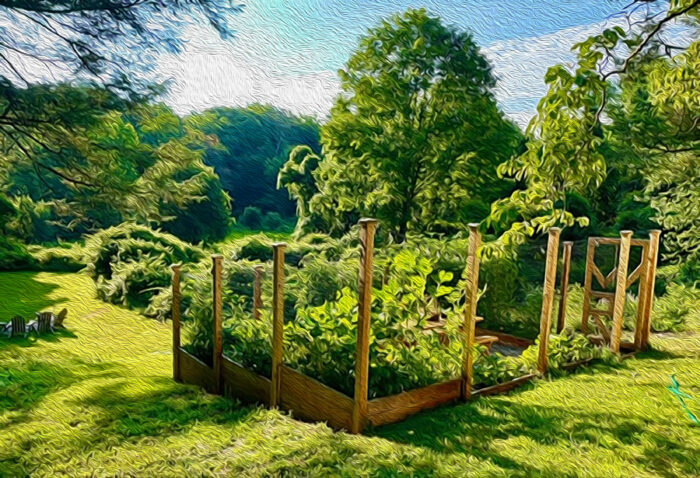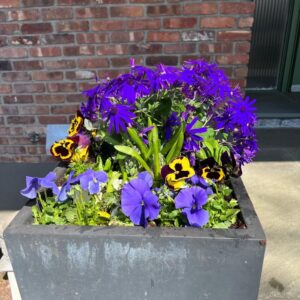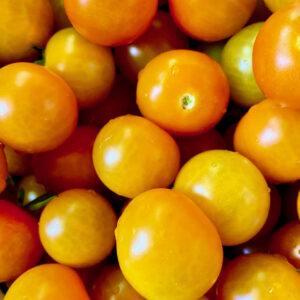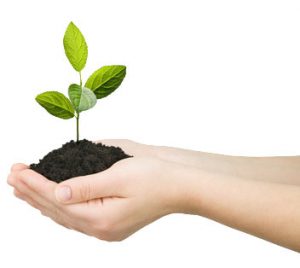
With spring around the corner, we reached out to some local gardening experts for guidance on what you can plant in your garden that will bloom this spring and summer. Whether you naturally have a “green thumb,” or you are newly interested in growing vegetables or flowers, we have you covered!
Lisa Eichler, a talented garden designer in Westchester County and proprietor of Legarden Designs, recommends using a “sequence of blooms” to keep your garden blooming beautifully all season long. When designing and installing gardens for her clients, Eichler likes to use a mix of evergreens, flowering shrubs, perennials, and annuals to ensure the garden stays aesthetic throughout the season. Annuals need to be planted every year, while perennials are planted once and last for multiple years.

Planting Before the Frost Date
According to Eichler, any planting done before the “frost date” of May 10th is called spring planting and is subject to freezing. Thus, it is best to choose hardy, cool weather flowers, which can be found at your local nursery in late March. In a spring container, Eichler may include pansies, which she loves for their “colorful and happy little faces,” as well as sweet alyssum and hyacinth, both of which have a lovely fragrance. She also recommends nemesia, which come in a wide range of colors, and ranunculus, which has both annual and perennial varieties. If one wants to add daffodils or tulips to an early spring container, these can be purchased already sprouting from the nursery. When these cool weather flowers start to wither by mid-June, they can be pulled from the garden and replaced with summer flowers.
Early flowering perennials, such as phlox, can also be purchased from the nursery and planted in early spring, but they have a limited flowering time, as is the case with most perennials. Some favorite perennials that Eichler loves to use are “creeping Jenny” (botanical name: Lysimachia nummularia), which is a yellow vine that lasts the whole season, and hellebores, known for their rose-like blossoms and green foliage.

Planting After the Frost Date
After May 10th, gardeners can begin their summer planting. Some deer-resistant summer annuals include ageratum and begonias. Eichler also likes to include colorful grasses, commonly known as fountain grass, to add dimension. One of her favorite plants is coleus, which offers lovely foliage.
Trees, Shrubs, and Perennials
Tom Roth of family-owned Roth Nursery, which has been in Armonk since 1948, supplied us with helpful information on flowering bushes and evergreens that can be planted in early spring. Roth has worked at his family business since he was a young man and works alongside his brothers, Carl and Walter, and his son, Tommy Jr.
Some deer-resistant, flowering evergreen shrubs that Roth recommends planting after the ground thaws in early spring include broadleaf evergreens like andromeda, which produce white flowers, P.J.M, which sprout purple flowers, and certain species of holly, like American holly and Dragon Lady Holly, which produce red berries. His recommendations for deciduous flowering shrubs include viburnum and spirea. Boxwoods, while they do not flower, are also a great choice for deer-resistant evergreen shrubs. As for bigger evergreens, Roth suggests Norway spruces, Green Giants, and white spruces.
Perennials that Roth suggests planting in early spring include bleeding hearts, ferns, Russian sage, catmint flowers, and any herbs. He recommends keeping things moist while they get established, which usually takes a season.
Planting Your Own Vegetables
Armonk resident Wendy Rosen of Homegrown Gardens, Inc. designs and builds beautiful vegetable gardens for her clients. Rosen had been in film production for many years when the pandemic hit, slowing the industry significantly. Rosen had her own vegetable garden for 20 years, so curating beautiful gardens for others was a natural next step.
“I needed a new creative outlet and Homegrown Gardens was born,” she said. “Producing a garden is similar to producing a TV commercial; it’s all problem-solving and finding solutions.”

Rosen teams up with carpenters and masons to build enclosures and sets her clients’ gardens up from soup to nuts. She finds it especially rewarding when clients text her pictures of their harvests throughout the year.
“One thing I’ve always loved most about having a garden is sharing our harvest. Most people bring a bottle of red to a dinner party, I bring a squash!” she says.
For spring gardening, Rosen recommends planting cucumber seeds outdoors in mid to late March, carrot seeds in late March, and beans in mid to late April.
For summer gardening, she advises planting peas outdoors in early May and tomatoes, peppers, eggplant, squash, zucchini, and basil all on Mother’s Day.
For fall gardening, Rosen says fennel seeds can be planted outdoors in late July, radishes and peas in early August, carrots and kale in mid to late August, lettuce in early September, and spinach in mid-September.
Replacing and replanting new vegetable plants ensures a long growing season. Each season, Rosen recommends rotating everything in your garden as each variety takes different nutrients from the soil.
Each of our experts was a treasure trove of information and had plenty more to share. To contact Lisa Eichler, visit her website at legardendesigns.com. Roth Nursery is open to the public and is located at 42 N Greenwich Road in Armonk, phone # (914) 273-8399. To contact Wendy Rosen, visit her website at homegrowngardensinc.com.




 Julia Desmarais is a senior at Horace Greeley High School. Growing up, she loved the Junie B. Jones books.
Julia Desmarais is a senior at Horace Greeley High School. Growing up, she loved the Junie B. Jones books.